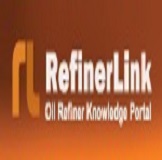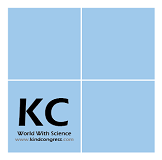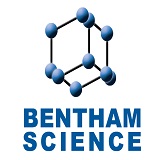
Catalysis 2020

Theme: Emerging technologies and scientific advancements in Chemical Engineering
Catalysis 2020 is delighted to welcome the participants from all over the world to attend the prestigious on World Congress on Catalysis, Chemical Engineering and Technology scheduled during February 19-20, 2020 at Phuket, Thailand on the theme “Emerging Technologies and Scientific Advancements in Chemical Engineering".
Scientific sessions of Catalysis 2020 conference Includes Chemical Engineering, Homogeneous Catalysis & Molecular Catalysis, Catalysis Material & Catalysis Chemistry, Chemistry Synthesis & Catalytic Synthesis.
Phuket is blessed with more than 30 amazing beaches to choose from. Paton Beach, Kata, Karon and Kamala have always been the most popular, but the north of the island reveals some hidden gems for travelers searching for a more romantic atmosphere.
Scientific Sessions
Session 1 : Catalysis & Zeolites
Zeolites are hydrated alumina silicate minerals made from interlinked tetrahedral of alumina (AlO4) and silica (SiO4). Zeolites are used as catalysts in petrochemical industries for cracking of hydrocarbons and isomerization. An important zeolite catalyst used in the petroleum industry is ZSM-5. It converts alcohols directly into gasoline (petrol) by dehydrating them to give a mixture of hydrocarbons.
Session 2 : Chemical Engineering
Chemical engineering involves the study of manufacturing, pharmaceuticals, healthcare including safety and hazard assessments, control engineering, chemical reaction engineering, construction specification and operating instructions. Chemical engineers are experts at developing proces for transforming raw materials into the vast array of high-value chemicals required by modern.
Session 3 : Homogeneous Catalysis, Molecular Catalysis, Homogeneous Catalysis
Homogeneous catalysis indicates to catalytic reactions where the catalyst is in the same phase as the reactants. In homogeneous catalysis, stoichiometric model reactions with wellâ€defined transition metal complexes can be used to elucidate individual steps of the catalytic cycle. In supra molecular catalysis, this control is utilized to gain preferences over established in homogeneous catalysis in bulk arrangement. A heterogeneous catalyst is in a different phase than the reactants. Because of this, it can't mix in with the reactants.
Session 4 : Catalysis Material & Catalysis Chemistry
Catalysts are substances that can be added to a reaction to increase the reaction rate without getting consumed in the process. Catalysts typically speed up a reaction by lowering the activation energy Ea or changing the reaction mechanism. Catalytic action is a chemical reaction between the catalyst and a reactant, forming chemical intermediates that are able to react more readily with each other or with another reactant, to form the desired end product.
Session 5 : Chemistry Synthesis & Catalytic Synthesis
Chemistry synthesis is the process by which many substances important to daily life are obtained. It is usually involves the breaking of existing bonds and the formation of new ones. Catalyst synthesis involves oxidizing metal powder or chips with nitric acid at elevated temperatures under agitation. Synthesis and catalysis are essential, to the construction of new materials; Catalysts are progressively used by chemists busy in fine chemical synthesis within both industry and academia.
Session 6: Industrial Catalyst and Process Engineering
Catalysis is central to the chemical industry, as it is directly or involved in the production of almost all useful chemical product. The R&D exercises in the Department are gone for the change of existing and production of new mechanical procedures. An essential reason for existing is the improvement of physicochemical premise of reactant advancements and operation of new catalysts.
Session 7: Fluid Mechanics
Fluid Mechanics is the branch of science that audits the lead of fluids when they are in a state of movement or rest. Notwithstanding whether the liquid is very still or movement, it is subjected to different powers and climatic conditions and it carries on in these conditions as indicated by its physical properties. Fluid mechanics oversees three sections of the fluid: static, kinematics, and stream points of view.
Session 8: Photochemistry, Photobiology and Electrochemistry
Photochemistry and photobiology of furocoumarins and the applications of furocoumarins in biology and medicine. Furocoumarins and their congeners are found in many plants. Electrochemistry and its principles constitute the fundamental base for the evolution of numerous entities of the physical world and are also essential for all activities of living beings.
Session 9: Environmental Catalysis and Green Chemistry
Environmental chemistry is the logical investigation of the synthetic and biochemical phenomena that happen in natural places. It can be characterized as the investigation of the sources, responses, transport, impacts, and fates of chemical species noticeable all around, soil, and water conditions; and the impact of human action and natural action on these.
Session 10: Catalysis for Renewable Chemicals
The renewable energy source is vitality that is gathered from renewable resources, which are normally renewed on a human timescale, for example, daylight, wind, rain, tides, waves, and geothermal heat. Renewable energy source frequently gives vitality in four vital regions: electricity generation, air, and water heating /cooling, transportation, and rural energy services. Rapid deployment of renewable energy and energy efficiency is bringing about significant energy security, environmental change relief, and economic benefits.
Market Analysis:
Introduction
Catalysis has been defined as the process by which chemical reaction rates are altered by the addition of a substance (the catalyst) that is not itself changed during the chemical reaction. Catalysts are usually used so that chemical reactions can occur at temperatures and pressures low enough for producers to use economically priced equipment or to ensure that the rate of production of a desired product is greater than the rates of production of undesirable by-products.
Why to organize this conference?
- To share learning and best follow from thought leaders and specialists
- To engage with compatible individuals with shared interests
- To inspire and generate ideas and new thinking
- To be seen as associate professional in your field
- To form new partnerships
- To get results and diffuse messages face to face in an exceedingly value effective manner
- To provoke action and collectively bring about change
- To network and meet new people and organizations
- To encourage PR and media coverage
Scope of conference
Catalysis and Chemical Engineering plays a vital role in our lives because of its uniqueness in properties and extended application in various industries. These are the basis of modern science and technology. Chemical Engineering is at the heart of many technological developments that touch our lives and find applications synthetic replacement for those resources as well as materials that are low in supply. In overall, it can be said that chemical engineers will be able to make very crucial contributions to the improvement in addition to the maintenance of the quality of our lives. Chemical Engineering techniques are used to produce usable, high quality products such as fibres, fabrics, paints, medical drugs, biomaterials, gasoline, lubricants etc used in various industries such as textile, food, plastics, automotive, aerospace, petroleum, oil and gas, biomedical, biotechnology and pharmaceuticals, thereby increasing the scope of Chemical Engineering.
Business value of Catalysis
Catalysts are as vital to a downstream facility as enzymes are to the human body. Process catalysts, a $13 billion-per-year business worldwide, play a vital role in the wider economy.The value of products dependent on process catalysts, which include refined products, chemicals and petrochemical products, and many others, is said to be around $500–600 billion per year.
Rising petroleum prices, strict environmental regulations, and rising demand for diesel are some of the key factors driving growth in the market. Whilst new and stringent environmental regulations are boosting the demand for petroleum refining catalysts in developed regions, rapid economic growth is driving the demand in developing regions, including the Middle East Refining and Petrochemicals Middle East identifies the most important catalysts companies active in the Middle East.
Top Global Universities
America
- Massachusetts Institute of Technology, USA
- University of Toronto, Canada
- McGill University, Canada
- University of British Columbia, Canada
- Stanford University, USA
- University of California, Berkeley, USA
- California Institute of Technology, USA
- University of California, USA
- Northwestern University, USA
- University of Minnesota, USA
Europe
- University of Cambridge, UK
- University of Oxford, UK
- Imperial College London, UK
- Technical University of Berlin, Germany
- Technical University of Dortmund, Germany
- Sorbonne University, France
- University of Barcelona, Spain
- University of the Basque Country, Spain
- Monash University, Australia
- University of Queensland Australia, Australia
Middle East
- Beijing Normal University, China
- Harbin Institute of Technology, china
- kafr el sheikh university, Egypt
- Aristotle University of Thessaloniki, Greece
- westford university college, United Arab Emirates
- German Jordanian University, Jordan
- heriot watt university Dubai campus, Dubai
- UAE university, United Arab Emirates
- Istanbul Technical University, Turkey
- Bilkent University, Turkey
Asia-Pacific
- Nanyang Technological University, Singapore
- National University of Singapore (NUS), Singapore
- The Hong Kong University of Science and Technology (HKUST), Hong Kong
- KAIST - Korea Advanced Institute of Science and Technology, South Korea
- Seoul National University (SNU), South Korea
- Tsinghua University, China
- Fudan University, China
- City University of Hong Kong, Hong Kong
- Peking University, China
- The Chinese University of Hong Kong (CUHK), Hong Kong
Fund Allotment to Catalysis Research
A new £14 million investment into the UK's Catalysis Hub that will support a nationwide research programme is announced today by the Engineering and Physical Sciences Research Council (EPSRC), which is part of UK Research and Innovation (UKRI). Centred at the Research Complex at the Harwell campus in Oxfordshire, the Hub will co-ordinate a collaborative research program across the UK.
Reference
- https://www.grandviewresearch.com/press-release/catalyst-market-analysis/
- https://www.alliedmarketresearch.com/catalysts-market
- https://ischoolconnect.com/blog/top-chemical-engineering-universities-in-usa/
- https://www.postgrad.com/blog/Top-10-Chemical-Engineering-Masters-Degree-Courses-In-The-UK-and-Europe/
- https://www.constructionweekonline.com/people/training/170202-list-of-top-engineering-colleges-in-dubai-uae-saudi-arabia-middle-east
- Chemical Engineering
- Homogeneous Catalysis & Molecular Catalysis
- Catalysis Material & Catalysis Chemistry
- Chemistry Synthesis & Catalytic Synthesis
- Industrial Catalyst and Process Engineering
- Fluid Mechanics
- Photochemistry, Photobiology and Electrochemistry
- Environmental Catalysis and Green Chemistry
- Catalysis for Renewable Chemicals
- Catalysis & Zeolites
- Journal of Chemistry and Applied Chemical Engineering



























































































































